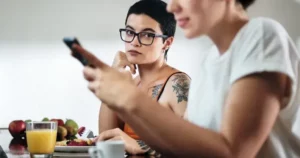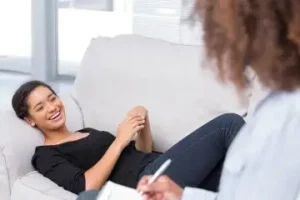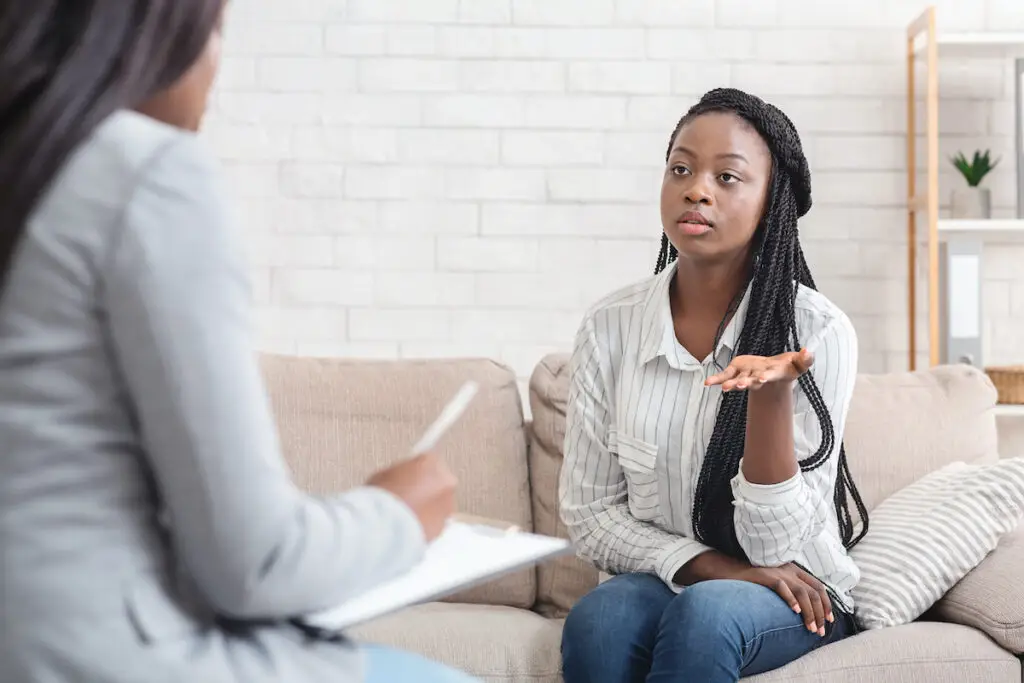Being a bisexual woman can bring a unique set of experiences and challenges. Understanding your sexual orientation and navigating through societal and personal obstacles is crucial for self-acceptance and overall well-being. In this article, we will explore the signs that indicate you might be a bisexual women, discuss the challenges commonly faced by bisexual women, and provide effective ways to tackle these challenges.
Contents
How Do I Know If I Am a Bisexual Women?
 Identifying bisexual women can be complex and unique to every individual. The process is often filled with self-questioning and exploration. Here are some signs you might consider:
Identifying bisexual women can be complex and unique to every individual. The process is often filled with self-questioning and exploration. Here are some signs you might consider:
- Attraction to All Genders: Bisexuality includes attraction to all genders. You might feel emotionally, romantically, or sexually drawn to people beyond just men and women.
- Not Just a Phase: You hold a firm belief that your feelings of attraction towards multiple genders are consistent and real, and not just a transient phase or a result of curiosity.
- Crushing on Both Genders: As a potential sign of bisexuality, you could find yourself developing crushes or deep feelings of attraction for both men and women.
- Defensive About Bisexuality: You may find yourself feeling defensive or upset when someone dismisses or criticizes bisexuality, showing a personal connection to this identity.
- Expanding Pornography Searches: You may start exploring pornography that involves various genders, indicating an interest and potential attraction to both men and women.
- Potential Same-Gender Relationship: You can envision yourself in a romantic or sexual relationship with someone of the same gender, which may suggest bisexual tendencies.
- Pride in Bisexuality: You feel a sense of pride or connection when you see the bisexual flag or other symbols associated with bisexuality, indicating a personal identification with this community.
Remember, these signs are not strict guidelines but could be indications if you’re questioning your sexual orientation.
Challenges Faced by Bisexual Women
 As with any personal journey, identifying as bisexual women is not without its challenges. Here are some of the difficulties you might encounter:
As with any personal journey, identifying as bisexual women is not without its challenges. Here are some of the difficulties you might encounter:
- Biphobia: This is the fear, hatred, or misunderstanding of bisexual individuals. It can come from both straight and gay communities and often stems from stereotypes and misconceptions about bisexuality. Bisexual women may face this in the form of people invalidating their orientation, stating it’s just a phase or that they need to pick a side.
- Bisexual Erasure or Invisibility: This is a prevalent issue where the existence or legitimacy of bisexuality is questioned or denied outright. It results in a lack of representation and can lead to feelings of isolation among bisexual women.
- Double Discrimination: Bisexual individuals often experience discrimination from both the heterosexual and homosexual communities. This can add a layer of complexity to their experiences and can lead to feelings of exclusion.
- Identity Struggles: As a bisexual woman, the journey towards understanding and accepting your sexuality can be complex. You might struggle with self-doubt, guilt, or confusion as you navigate your feelings.
- Mental Health Challenges: Studies have shown that bisexual individuals, particularly women, face higher rates of mental health issues such as anxiety, depression, and stress, often as a result of the pressures and prejudices they encounter.
Despite these challenges, it’s essential to remember that there is a vibrant and supportive community out there.
Ways to Tackle These Challenges
 Navigating through the challenges of identifying as a bisexual woman can be difficult. However, there are strategies and resources that can help:
Navigating through the challenges of identifying as a bisexual woman can be difficult. However, there are strategies and resources that can help:
- Educate Yourself and Others: Understanding bisexuality can go a long way in countering biphobia and bi-erasure. Familiarize yourself with the facts and help others understand too.
- Find a Supportive Community: Connecting with individuals who share your experiences can be incredibly healing. Look for LGBTQ+ organizations, online communities, or local groups that provide a safe space for you to express yourself.
- Seek Professional Help: Therapists and counselors, especially those specializing in LGBTQ+ issues, can provide guidance and support. Don’t hesitate to reach out if you’re dealing with feelings of confusion, guilt, or mental health struggles.
- Practice Self-Love and Acceptance: Your journey to understanding your sexuality is unique and it’s important to be patient with yourself. Celebrate your individuality and learn to accept your feelings without judgment.
- Advocate for Your Rights: Stand up against discrimination and fight for your rights. Every voice matters in the struggle for equality and acceptance.
Remember, it’s okay to ask for help and lean on others for support. You are not alone in this journey.
How a Professional Therapist Can Help You?

Turning to a professional therapist, especially one specialized in LGBTQ+ issues, can be a great source of help when exploring your bisexuality. Here’s how:
- Understanding Your Feelings: A therapist can provide a safe space for you to explore your feelings and attractions, helping you make sense of any confusion or doubts you may have about your sexual orientation.
- Dealing with Discrimination and Prejudice: Experiences of discrimination or prejudice can be emotionally difficult. Therapists can provide coping strategies and tools to manage these situations, fostering resilience and self-esteem.
- Addressing Mental Health Concerns: If you’re dealing with mental health issues like anxiety or depression, therapists can provide the necessary support and treatment. They can help you navigate these challenges in a healthy way.
- Supporting Identity Formation: Therapists can guide you through the journey of self-discovery and self-acceptance, assisting you in forming a secure identity that includes your bisexuality.
- Crisis Intervention: In severe cases, if you’re experiencing crises like suicidal thoughts or severe depression, therapists can provide immediate help and refer you to the necessary resources.
Remember, reaching out to a therapist is not a sign of weakness but a step toward self-care and understanding.
Techniques Used in Therapy Sessions
Therapists use a variety of techniques to support their clients, depending on the individual’s needs and the therapist’s approach. Here are some commonly used methods in therapy sessions:
- Cognitive Behavioral Therapy (CBT): This approach helps you identify and change negative thought patterns that lead to harmful behaviors or feelings. It can be particularly useful in managing stress, anxiety, and depression.
- Acceptance and Commitment Therapy (ACT): ACT teaches you to accept your thoughts and feelings without judgment, and commit to actions that align with your values. This can be helpful in accepting your bisexuality.
- Narrative Therapy: This approach encourages you to become the narrator of your life and reshape your personal narrative in a positive, self-affirming way. It can assist you in redefining your identity.
- Mindfulness Techniques: These involve practices like meditation, deep breathing, and body scans. They can help reduce anxiety and increase your awareness of your feelings and reactions.
- Interpersonal Therapy (IPT): IPT focuses on improving your communication skills and building stronger relationships. It can be beneficial if you’re navigating relationship challenges related to your bisexuality.
These techniques aim to provide you with tools and strategies to understand yourself better and cope with your feelings and challenges effectively.
How to Find the Right Therapist
Finding the right therapist is a crucial step in your journey towards self-understanding and acceptance. Here are some steps you can follow:
- Identify Your Needs: Understand what you’re seeking from therapy. Are you exploring your sexual orientation, dealing with discrimination, or managing mental health issues?
- Seek a Specialist: Look for therapists who specialize in LGBTQ+ issues. They would have the necessary training and understanding to support your specific needs.
- Check Their Credentials: Ensure the therapist is licensed and has the right credentials. Review their education, experience, and areas of expertise.
- Consider the Therapeutic Approach: Different therapists use different therapeutic methods. Research these approaches to see what might work best for you.
- Set Up a Consultation: A preliminary consultation can help you gauge your comfort level with the therapist. It’s important to find someone you feel comfortable talking to.
- Consider Logistics: Think about factors like location, availability, frequency of sessions, and cost. Online therapy could be an option if it suits your circumstances better.
Remember, it’s perfectly okay to try out a few therapists before settling on the one that feels right for you. The right therapist can make a significant difference in your therapeutic journey.
Conclusion
Understanding your sexuality and identifying as bisexual women is a deeply personal and unique journey. It’s okay to have questions and doubts, and it’s perfectly fine to take your time to explore these feelings.
Life may sometimes be challenging for bisexuals, but Online Bisexual Counseling can help. Get experienced LGBTQ therapists at PrideMantra: Book a trial LGBTQ therapy session
Facing challenges along the way is normal, but remember that you’re not alone. There’s a vibrant community ready to support you and professional therapists who can provide guidance.
Remember to embrace who you are, and don’t let societal norms define your happiness. Take your time, and remember, it’s okay not to have all the answers.


